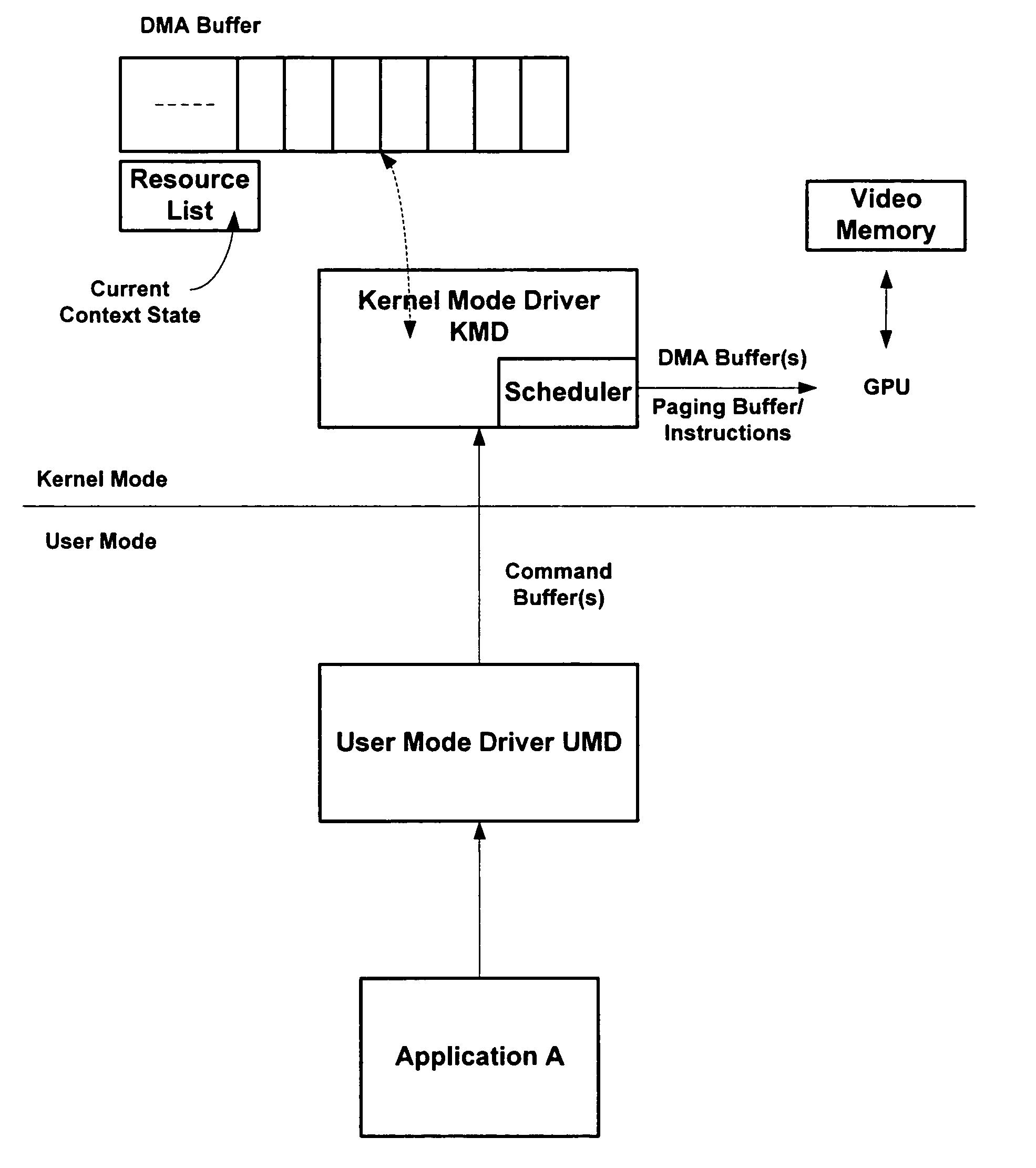Systems and methods for scheduling coprocessor resources in a computing system
a computing system and resource scheduling technology, applied in the field of systems and methods for scheduling coprocessor resources in a computing system, can solve the problems of hogging coprocessor resources, inability to efficiently schedule coprocessor workloads, and inability to scale well, so as to reduce the amount of memory
- Summary
- Abstract
- Description
- Claims
- Application Information
AI Technical Summary
Benefits of technology
Problems solved by technology
Method used
Image
Examples
Embodiment Construction
Overview
[0023]As mentioned, in various embodiments, the invention provides a system of preemptive multitasking achieving benefits over cooperative multitasking by any one or more of (1) executing rendering commands sent to the GPU in a different order than they were submitted by applications; (2) preempting the GPU during scheduling on non-interruptible hardware; (3) allowing user mode drivers to build work items using command buffers in a way that does not compromise security; (4) preparing DMA buffers for execution while the GPU is busy executing a previously prepared DMA buffer; (5) resuming interrupted DMA buffers; and (6) reducing the amount of memory needed to run translated DMA buffers.
[0024]The invention is described in further detail following the below general description of the kinds of computing environments in which the invention may be implemented. In short, the invention is widely applicable to any computing environment in which multiple applications, services, object...
PUM
 Login to View More
Login to View More Abstract
Description
Claims
Application Information
 Login to View More
Login to View More - R&D
- Intellectual Property
- Life Sciences
- Materials
- Tech Scout
- Unparalleled Data Quality
- Higher Quality Content
- 60% Fewer Hallucinations
Browse by: Latest US Patents, China's latest patents, Technical Efficacy Thesaurus, Application Domain, Technology Topic, Popular Technical Reports.
© 2025 PatSnap. All rights reserved.Legal|Privacy policy|Modern Slavery Act Transparency Statement|Sitemap|About US| Contact US: help@patsnap.com



